3.8 So sieht meine Familie aus

Guten Tag!
Zum Aufwärmen machen wir unseren Tagesminiplausch und eine Wiederholung.
Wiederholung
In the previous lesson, you learned how to use the words klein, groß, kurz, and lang. You also learned how to make comparisons using these words. Let’s review what you have learned.
Jetzt bist du dran!
Consider your closest friend or family member. In your written journal make a comparison between you and this person. Perhaps they are taller. Maybe they have longer hair than you do. After you have written down your comparison, record it in your audio journal.
Lektionsüberblick
In this lesson, we will continue to talk about physical appearances and similarities and differences in our families. In the end, you will be able to 1) describe some of your family, 2) comment on family similarities, and 3) describe people in art.
Was weißt du schon?
|
|
|
| Noch nicht start klar?
Du kannst immer auf die gleiche 1010-Lektion zurückgreifen! |
Not confident about starting this lesson?
You can always review the same Lektion from 1010. |
1) So sieht meine Familie aus (What my family looks like)
Read and listen to the comic below.
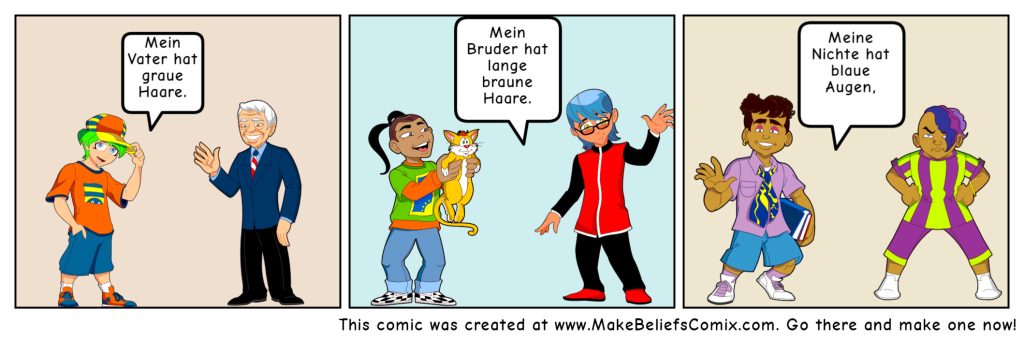 |
||
Let’s practice what you heard.
Now look at the real-life photos and the descriptions.
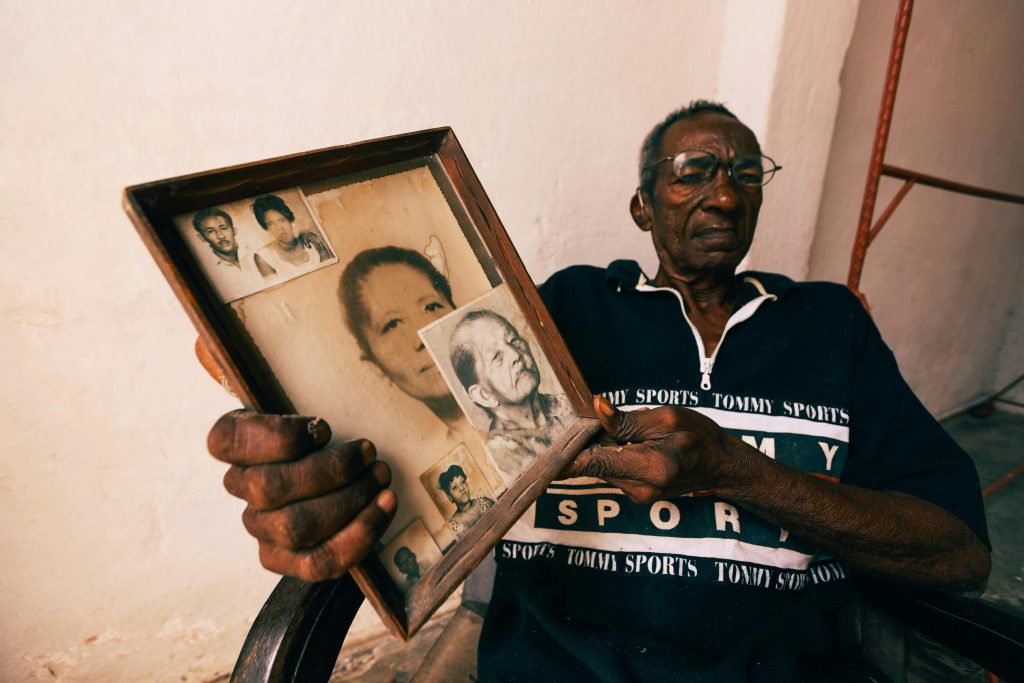 |
Der Mann sagt, “Meine Mutter, mein Vater und ich haben braune Augen.” |
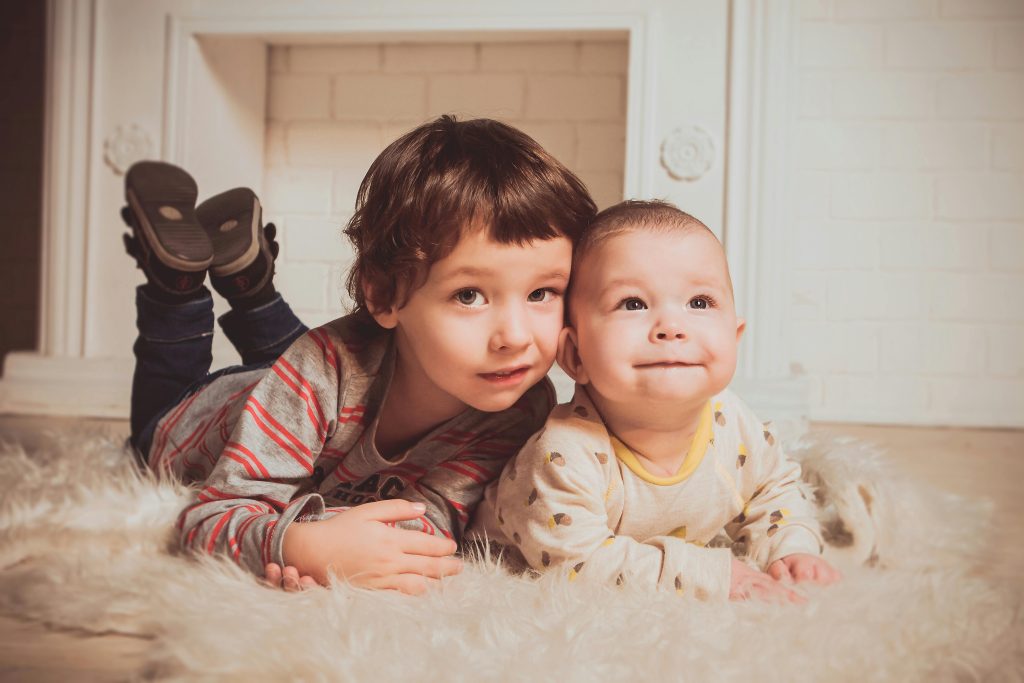 |
Das Kind sagt, “Mein jüngerer Bruder hat kurze Haare. Meine Haare sind länger als seine Haare.” |
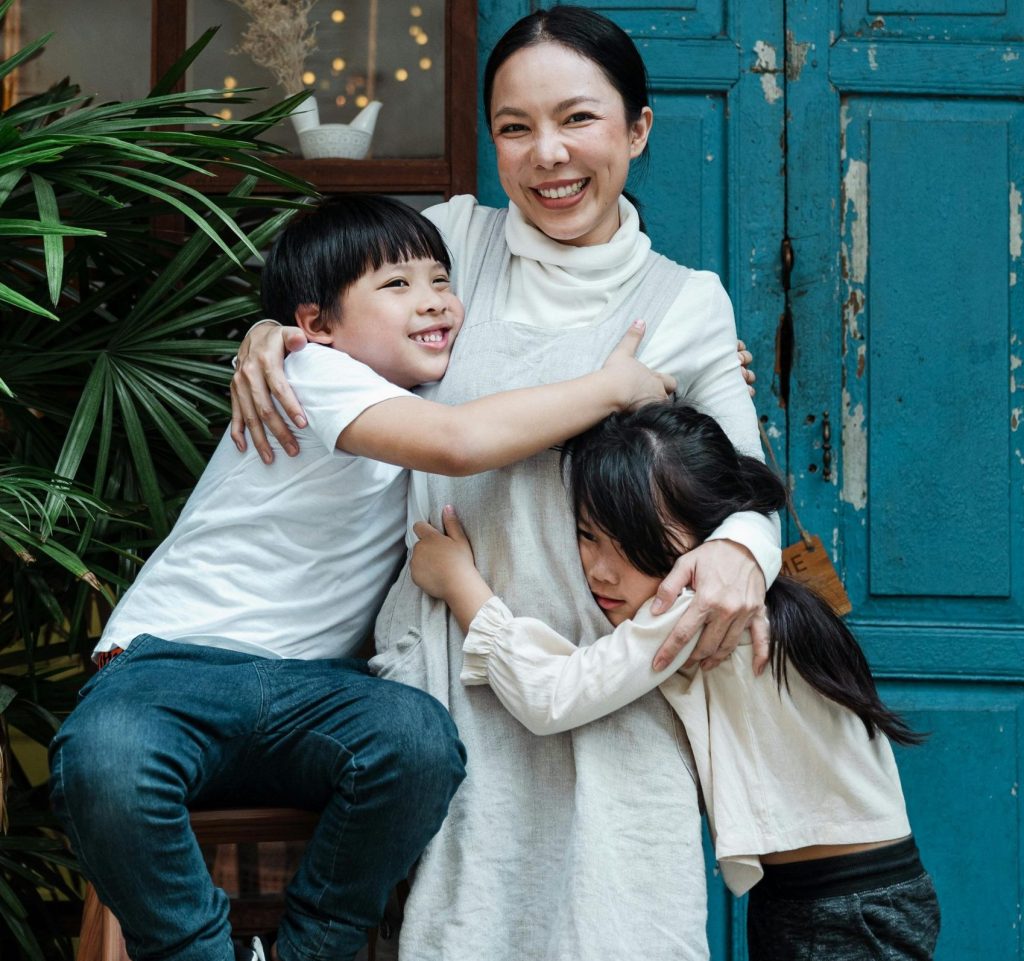 |
Die Mutter sagt, “Meine Tochter und mein Sohn haben schwarze Haare.” |
For more practice describing people, watch the following video:
Jetzt bist du dran!
Köln im Blickpunkt

In Köln gibt es unter der Erde einen Raum mit zwei Kronleuchtern, der Kronleuchtersaal. Sie wurden 1890 aufgehängt, als das Abwassersystem modernisiert wurde. Heute kann man dort an Führungen teilnehmen oder Konzerte besuchen.
In Cologne, there’s an underground room with two chandeliers, the Kronleuchtersaal (=the chandalier hall). They were hung in 1890 when the sewage system was modernized. Today, you can take guided tours or attend concerts there.
2) Familienähnlichkeiten (Family Similarities)
Read the passage below. Then watch the short video and answer the question at the end (click the bright pink circle at the end). (This video works on Chrome.)
Ich sehe wie mein Vater aus. Ich trage eine Brille. Mein Vater trägt eine Brille. Ich sehe wie meine Mutter aus. Ich habe grüne Augen. Meine Mutter hat grüne Augen.
|
Der Apfel fällt nicht weit vom Baum. The apple doesn’t fall far from the tree. |
Jetzt bist du dran!
3) Menschen in Kunst
We have worked with art during our time together (e.g. the Laramie Murals and the artwork from die Berliner Mauer). Now we will imagine we are visiting a museum and looking at portraits. We will use what we have learned in this lesson and previous lessons to describe the physical attributes of a person in a portrait that we are drawn to. We will also speculate/imagine what possible feelings this person is experiencing.
Step 1. First choose a portrait. You can view this collection from the National Portrait Gallery. The site has lots to see, so feel free to click around. Or, if you have access to a portrait that is meaningful to you, you are welcome to use that.
Step 2. Based on what you see and experience from the portrait, replicate the chart below in your journal and fill in the requested information. (Some example answers have been given to you based on this photo of George Washington).
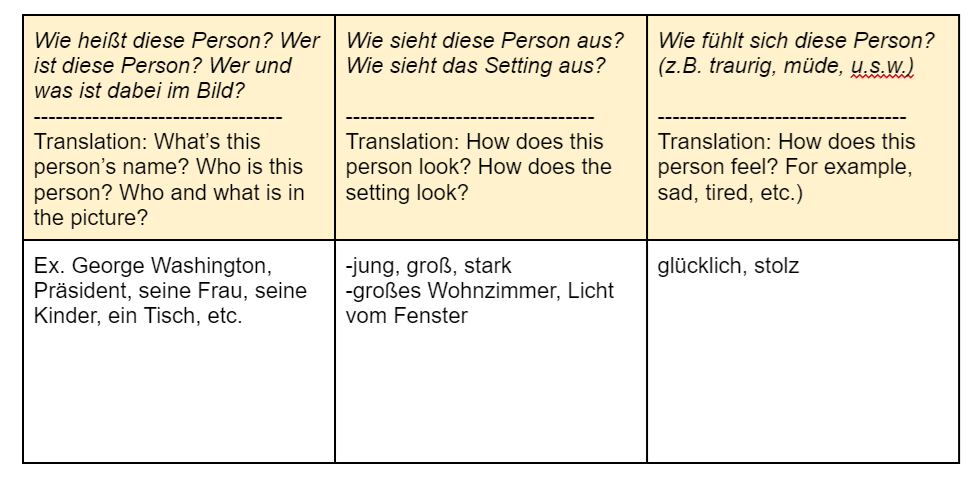
Step 3: Follow the instructions in the Jetzt bist du dran box below.
Jetzt bist du dran!
Zum Schluß

*As you conclude this lesson, don’t forget to check Canvas!*

Media Attribution
- YouTube video from Willkommen: Deutsch für alle, licensed by CC BY-NC-SA 4.0 International license.
- Menschen in Kunst activity adapted from: Multiliteracies at the Museum: A Resource Book for Language Teachers Copyright © 2022 by Chantelle Warner is licensed under a CC BY 4.0 International License.
Media Attributions
- 3.8 comic_make-beliefs-comix-16-2048×684
- Photo of man with frame by pexels-tkirkgoz-11455958
- Photo of brothers by pexels-vika-glitter-392079-1648379
- Photo of mother with children by pexels-ketut-subiyanto-4473314
- Photo of Kronleuchtersaal by A. Savin, Wikipedia, CC BY-SA 3.0
- 3.8 (ii) chart

